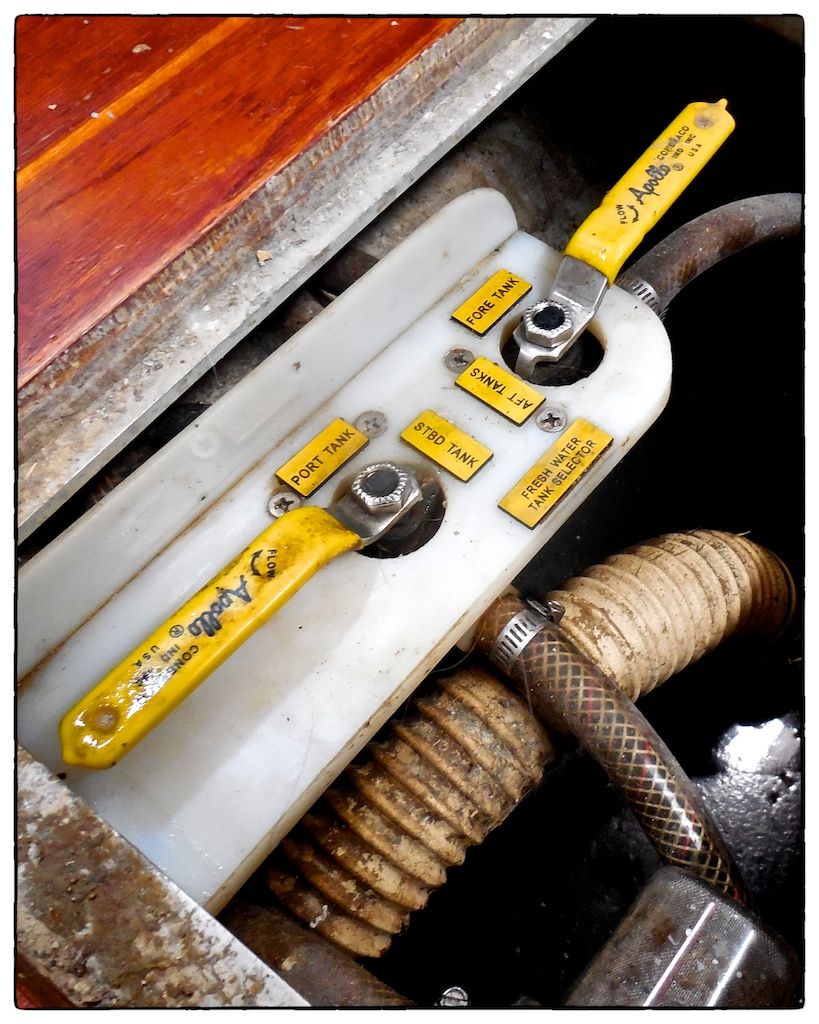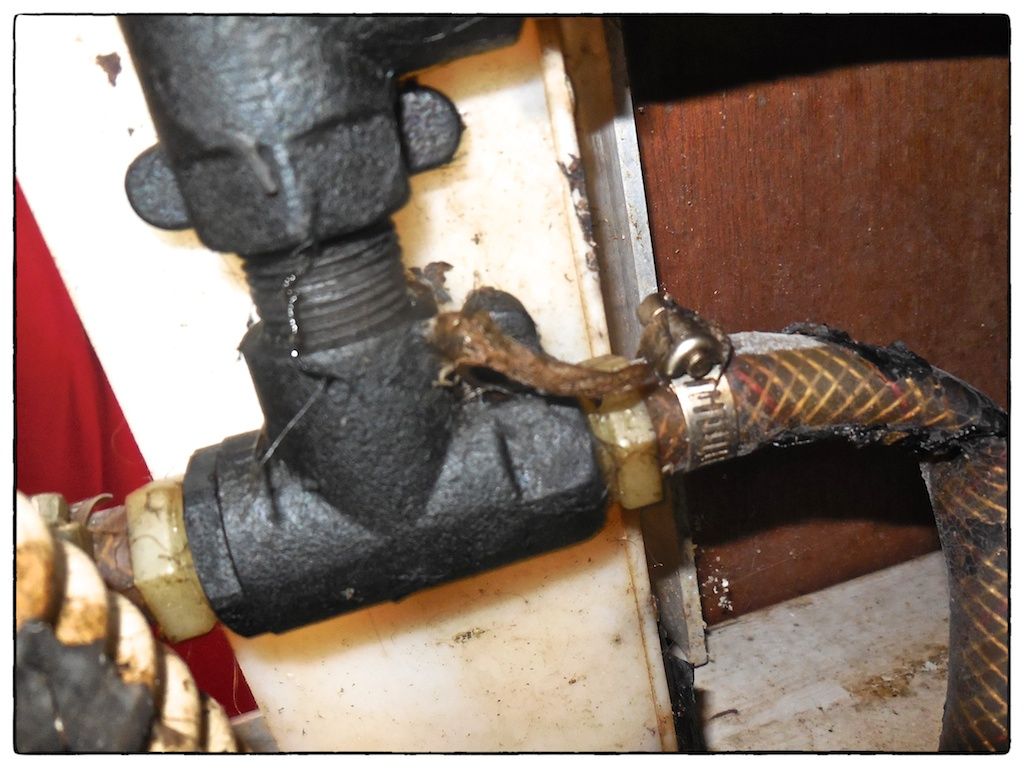A Simple Water Tank Manifold
--Blogpost written by Bob
Three water tanks having a total capacity of 104 gallons were included in the original design of s/v Rainy Days. The three rotationally molded tanks were made by Kracor. (They were constructed from LLDPE and they can be weld repaired using LLDPE rods.)
The original plumbing was done using a gray-colored semi-flexible plastic (polybutylene) piping and Qest fittings. The Qest compression fittings use a spherical plastic component that fits over the plastic pipe and it pulled tight onto a mating piece on the connecting end by a light gauge spring washer and a heavy-duty plastic nut. Each tank had a plastic valve that was used to allow water to be drawn from the tank--typically, a settee cushion had to be lifted or removed to get access to the the valve.
A little over 20 years ago just before my first winter trip to the Bahamas, I changed the fresh water plumbing system on s/v Rainy Days as a way to address a number of small leaks at various fittings. Fresh water would slowly leak into the bilge and it would be pumped overboard by the bilge pump. I decided to replace the gray semi-flexible plastic piping with more conventional vinyl water hose and to make a manifold that was easier to access for switching the water tanks.
 |
| The removable floor panel for the bilge access was the perfect location for the fresh water manifold--no more lifting settee cushions for access to the valves. |
Since the bilge had good access by merely lifting a small removable panel from the floor, this was an ideal location for the fresh water manifold.
 |
| This is the bottom view of the manifold. All the hoses were changed to conventional vinyl water hoses. Judging by the brown stains on the hoses, it's time to change them again! |
 |
| A close up view of the bottom reveals the pipe spool connecting the two 3-way valves. |
Right now I have a leak in my port water tank. When I remove the plastic tank for repair or replacement, I intend to change out all the old fresh water hoses with new ones. Stay tuned for this future project...
Thanks for following our blog!
No comments:
Post a Comment